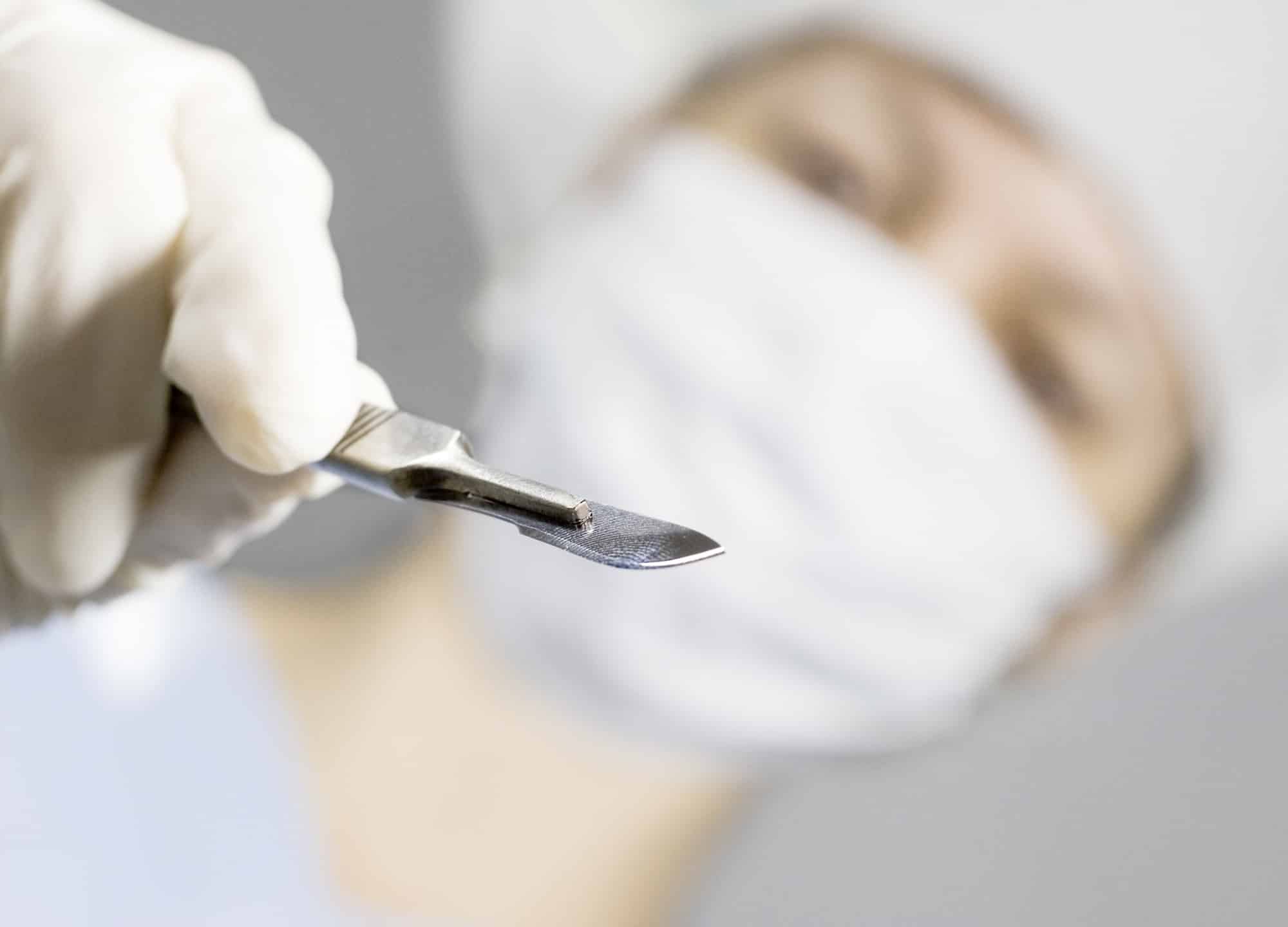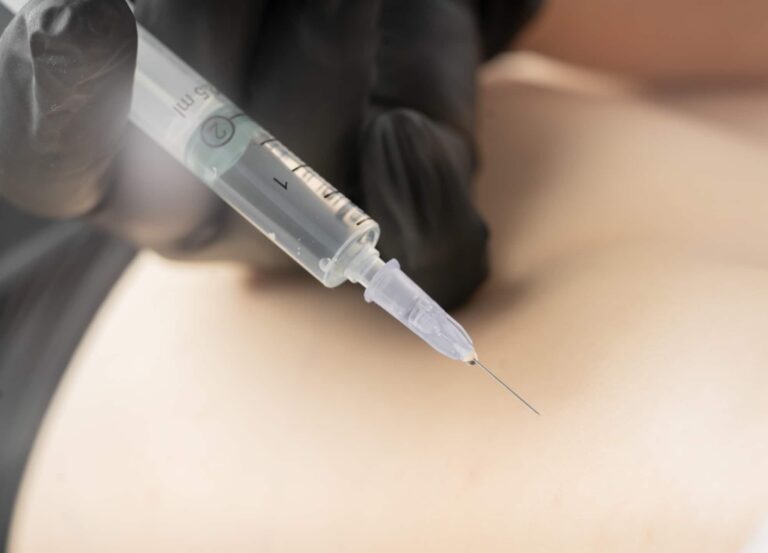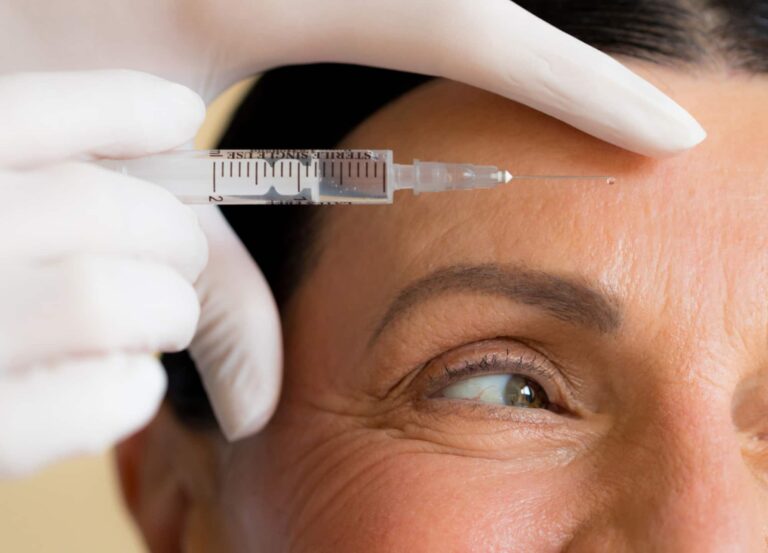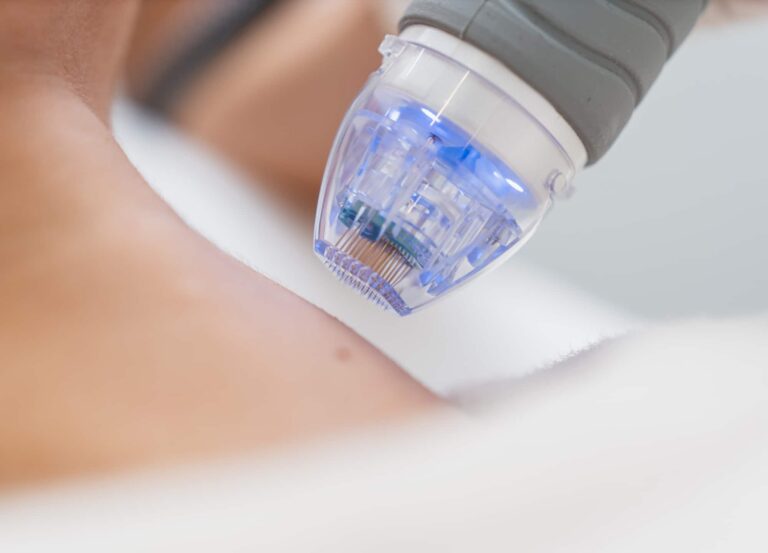No one likes needles, scalpels, and drills near their face or body, but it’s what those of us who get injections, or plastic surgery, or dental work put up with, hoping the end result will justify the discomfort. For many people though, the thought of going to the doctor’s office—either for elective procedures they want or standard medical care, such as checkups and vaccinations, they need—provokes such fear and anxiety that it can be debilitating.
But, what exactly is a fear of doctors? What causes it? And, most importantly, how can you deal with it? Here, more on all of that, plus real-life, practical advice from three providers—a dentist, a plastic surgeon, and an oculoplastic surgeon—on how to get over the fear of going to the doctor and feel comfortable undergoing procedures.
What is a fear of doctors?
The technical term for this is iatrophobia; it bears mentioning that it, like all other phobias, is classified as an anxiety disorder. (It’s also known as latrophobia.) Other related conditions include tomophobia (a fear of medical procedures and/or surgeries), nosocomephobia (fear of hospitals), and dentophobia (fear of dentists). Many of us may feel a little anxious before undergoing surgery or even having blood tests performed; there’s even a condition known as “white coat hypertension” in which your blood pressure becomes elevated during doctor visits or in the presence of a medical professional.
Iatrophobia is different. This is an extreme fear of doctors that’s characterized by both physical and mental symptoms (many of which are similar to that of a panic attack) such as an extreme feeling of dread or terror, nausea, dizziness, shaking, a rapid heart rate. These can often be so debilitating that they actually prevent you from seeing a healthcare professional, even when it’s absolutely necessary to do so, and affect your overall well-being.
What causes a fear of doctors?
As with many other mental health conditions, there are a variety of potential underlying causes as to why someone may develop iatrophobia or a similar phobia. It may be the result of a previous bad experience with a doctor, or if you have a chronic condition that’s required multiple doctor visits and medical tests. It can also occur if you’ve previously received bad news from a doctor, or accompanied loved ones or family members to frequent medical tests and doctor’s appointments. But often, as with many other phobias, there simply is no rational reason for it.
How can you get over a fear of doctors?
Dealing with this type of debilitating fear can be extremely challenging. Remember that calling in the help of a mental health professional can be invaluable. A psychologist or therapist can help you deal with the issue via a variety of methods. Cognitive behavioral therapy (CBT) is one common option; this is a form of of psychotherapy or “talk therapy” through which you can explore underlying reasons for your fear and anxiety and learn how to better handle them. There’s also exposure therapy, where a gradual exposure to certain anxiety triggers is coupled with relaxation techniques to slowly desensitize you.Along with seeking professional help, there are other things that can help manage your fear, both beforehand and in the moment. Here, a few top pieces of advice from medical professionals.
1. First, know that doctor fear is normal and common
You’re hardly alone in being fearful of doctors and medical procedures. Studies show that an estimated one out of three people in the U.S. avoid medical care, due to negative experiences in the past. Similarly, dental anxiety is estimated to affect 36% of the population—with 12% suffering from fear so extreme it can prevent them from getting even the most basic oral health care.
“Dental fear is super-common, but it’s not talked about enough,” says Dr. April Patterson, a Fort Lauderdale, Florida–based cosmetic dentist. “There are a lot of people who can afford dentistry but don’t do it just because they’re afraid—and some people don’t even recognize fear as being the reason they’re putting off having work done. I’ve literally built my practice [around helping] people who have dental fear.”
The reasons behind the fear and anxiety are as nuanced and individual as the patients themselves. “I’ve had people say they went in for a consultation and they didn’t even get to meet the doctor. Or they called with questions and nobody got back to them. Or they had a procedure and developed a complication, and their doctor now refuses to meet with them. Those are the kinds of things that are red flags and lead to fear in patients,” says Dr. David Shafer, a board-certified plastic surgeon in New York City.
Fear triggers are truly specific and manifest in many different ways, adds Dr. Patterson. “I have clients who hate dental injections but will let me do cosmetic injections all day—so that’s not a needle issue. I have clients who won’t sit in the dental chair–they want to do the procedure standing up. Fear could be triggered by something that happened when they were younger—like if they told the dentist they weren’t fully numb and the dentist kept working on them, or if they were sexually abused. I just never know what a client is going to say.”
2. Consider whether your doctor fear is worse than the worst-case scenario
Forgoing medical care and dental care, especially when you aren’t feeling great, is like playing Russian roulette—you might get lucky… or things could go terribly wrong. “If you’re too scared to go to the dentist, the worst thing that can happen is you lose teeth. Imagine that. But even [before that happens], dealing with pain in your mouth is horrible. You can’t work or focus on anything when you have dental pain—it’s hard just to get through the day.”
Many people who struggle with anxiety find this sort of worst-case scenario exercise helpful: think about the event that is causing you stress and list all the worst things that could happen, then try to feel your emotions and imagine how you would react to the worst thing happening. It works whether the worst-case scenario isn’t that bad (the filler injections hurt you for 30 seconds) or is actually pretty terrible (you lose a tooth because you didn’t treat an early cavity and now don’t want to smile in front of anyone and need much more extensive dental work to fix the issue)—either way, the original procedure becomes less of a big deal.
3. Seek out healthcare providers who understand the fear of doctors
Many providers, especially general physicians and dentists, note their experience in dealing with anxious patients in their website bios, but you can also get a good sense of their bedside manner by reading reviews. “You want to find a [provider] who advertises that they treat people who have fear and they’re aware of the fact that it’s common,” says Dr. Patterson.
When you call to schedule an appointment, let the receptionist know that you’re struggling with anxiety around the visit and ask them to put a note in your file. The staff should be “friendly, understanding, and accessible” from start to finish, says Dr. Shafer. “We try to do hand-holding over the phone so that by the time the patient comes in the office, they’ve gotten over the fear a little bit.” If you get a bad feeling or aren’t being listened to during the initial call, it’s more than okay to look for another provider.
4. Pay attention to how you feel during the consultation
Going in for a consultation is a huge step if you have intense fear, but remind yourself that it’s simply a conversation, not a commitment. “I get patients who come in with significant anxiety that has kept them away. In the consultation, they’ll tell me they’re scared, and I say, ‘We’re just talking. There’s no knife or needle in my hand, and we’re not even saying you’re going to have surgery,’” says Dr. Robert Schwarcz, a board-certified oculoplastic surgeon in New York City. “When you remind patients that surgery isn’t on the table right then, it calms them down. Then I ask a few personal questions about their kids or something, to change the subject before coming back to the reason they’re there.”
In his experience, Dr. Schwarcz says, the most nervous patients cite fear of looking “fake” and “overdone,” so he’ll take out his book of before and after photos and ask them to find someone who looks really fake. “They’ll usually say, ‘Oh, actually these people look pretty natural, I’m okay now.’ But if patients have lived through when a parent or friend had botched plastic surgery, then they’ll have significantly more anxiety—and I have to navigate that.”
In those cases, Dr. Shafer always reassures patients of his experience and qualifications. “You hear horror stories of people going to a developing country to have surgery or going to a [doctor who isn’t board-certified in plastic surgery] to have cosmetic procedures and then things going really wrong. That makes people nervous. I tell patients in the consultation that I’m double board certified, our operating room is Quad A certified, and we use only board-certified anesthesiologists, so everything in our office is above board.”
5. Take advantage of the bells and whistles that make an office feel less medical
Today, most reputable doctors have moved away from cold, clinical office space and waiting rooms to something that feels more spa-like—and you should absolutely indulge in all the perks, to make your doctor’s appointment experience more relaxing. Dr. Shafer’s New York City practice could practically double as an upscale bodega, thanks to its expansive beverage, snack, and candy bar, and Dr. Patterson’s dental boutique offers perks like hot-towel service, wine, and temple massages as well as letting patients choose what movie or TV show they’d like to watch during their procedure. “By changing the experience, you change the way people feel about dentistry,” she says.
6. Understand your anesthesia and pain management options
For every patient who is terrified of going under general anesthesia, there’s one who can get through a procedure only if they’re totally knocked out. Knowing that, in many cases, you have options when it comes to anesthesia should help you to feel more in control. Your provider should explain the pros and cons of each and prepare you for what you can expect to feel like under the anesthetic and as it wears off.
“Talk anesthesia”
Verbal anesthesia is a common tactic doctors use to distract patients during Botox and filler injections, lasers, and routine dental work. “Everyone has a fear of needles and pain to some point, right? But I think some doctors concentrate too much on telling the patient, ‘Here comes the needle, it’s not going to hurt, here we go, get ready.’ That amplifies the fear, so I like to have a friendly conversation, then casually say, ‘Okay, I’m going to start injecting,’ then continue the conversation. The number one thing people say after injections is that it wasn’t as bad as they thought it would be,” explains Dr. Shafer.
The key, says Dr. Schwarcz, is to make sure you’re telling the patient a funny or interesting story. “If I can make them laugh, they’re usually at ease. Infield chatter during the procedure is very valuable.”
Laughing gas
The use of Pro-Nox, a mixture of nitrous oxide and oxygen, is becoming increasingly popular in the aesthetics world. Dr. Schwarcz administers it before numbing injections so patients won’t feel the pain of needles, and many turn to it for more painful noninvasive treatments, like Ultherapy, because it reduces muscle tension.
Local anesthesia
Local anesthesia refers to injections that numb only the area of the body being treated. There are plastic surgery procedures that can be done under local, including liposuction of smaller areas and buccal fat removal, but Dr. Shafer doesn’t recommend it for bigger surgeries. “One misperception is that local means no pain, but somehow you have to get that local anesthesia into the patient. You have to take big needles and inject local anesthesia in the whole area that you’re treating, which could take 10 minutes, so there’s actually less pain when you’re doing general anesthesia or IV sedation,” he says.
IV sedation
For IV sedation, your doctor will administer anti-anxiety medication intravenously, to put you into a semiconscious state. You won’t be fully aware of what’s happening or feel the procedure, but you will be able to respond to basic cues. “I would say, 90% of the clients I work on are under IV sedation. That’s the number one way to combat dental fear. Even if you need a teeth cleaning under IV sedation, find a doctor who will do that—and it will make a big difference,” says Dr. Patterson.
General anesthesia
General anesthesia puts you into a medically induced coma and renders you unable to move, talk, or remember the procedure. Most importantly, it’s considered to be extremely safe in healthy patients who have passed a medical clearance exam. “We do general anesthesia because we want to maximize patient comfort,” says Dr. Shafer. “I tell patients who are nervous that under general anesthesia, 100% of the surgeon’s concentration is on your procedure and 100% of the anesthesiologist’s concentration is on making sure you’re comfortable, whereas when you’re under local, the surgeon is having to manage your pain and discomfort and concentrate on the procedure, which can be limiting.”











